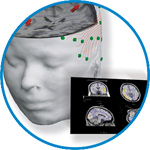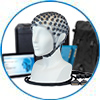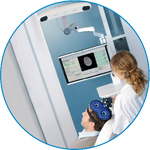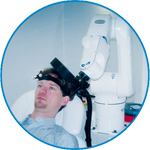- Home
- About ANT
-
Products

asa
asa is a highly flexible EEG/ERP and MEG analysis package with a variety of source reconstruction, signal analysis and MRI processing features.
.jpg)
eego mylab
The new frontier in multimodal brain research. With up to 16 kHz sampling rate, 256 EEG channels and unique software features, eego mylab gives you an unprecedented in-depth understanding of the human brain.

eego sports
eego sports offers complete freedom to collect high-density EEG data, bipolar EMG signals, and a variety of physiological sensor data, wherever and whenever required, with publish quality data in less than 15 minutes!

waveguard net
The waveguard net sets a new standard for research applications requiring high-density EEG data acquisition with quick preparation time, high flexibility, and subject comfort.

visor2
Our new and upgraded visor2 solutions integrate all the latest technologies for navigated rTMS, dual-coil navigation support, EEG-TMS recordings and pre-surgical evaluation for the highest quality in research and clinical procedures.

powerMAG ANT
The PowerMAG ANT 100 rTMS stimulator is designed for the specific needs of high-end TMS applications. Powerful high-frequency TMS as well as high precise single pulse and repetitive pulse protocols are combined in one single device.

xensor
xensor offers the solution for digitization of 3D electrode positions. xensor takes care of the whole procedure; it records, visualizes and stores positions acquired with a dedicated digitizer.

waveguard original
waveguard original is the cap solution for EEG measurements compatible with fMRI, MEG and TMS system. Use of active shielding guarantees performance in even the most demanding environments.

waveguard connect
waveguard connect EEG caps are a perfect match for hospitals and institutes aiming at reliable EEG, maximum uptime and great patient comfort! For optimal signal quality, the electrodes are made of pure, solid tin.

waveguard touch
waveguard touch is a dry electrode EEG cap. The unique Ag/AgCl coated soft polymer electrodes provide stable, research-grade EEG signals while maintaining subject comfort. The combination of these innovative dry electrodes and the industry-leading waveguard cap makes waveguard touch the best solution for dry EEG.

smartmove
smartmove allows planning of a complete TMS session ahead by defining stimulation sites based on anatomical MRI information and functional information like fMRI, PET or EEG/MEG.
Stay - References
- Support
- Events
- News
- Contact Us
You are here
Cortical contributions to control of posture during unrestricted and restricted stance
Cortical contributions to control of posture during unrestricted and restricted stance
There is very little consensus regarding the mechanisms underlying postural control. Whereas some theories suggest that posture is controlled at lower levels (i.e., brain stem and spinal cord), other theories have proposed that upright stance is controlled using higher centers, including the motor cortex. In the current investigation, we used corticomuscular coherence (CMC) to investigate the relationship between cortical and shank muscle activity during conditions of unrestricted and restricted postural sway. Participants were instructed to stand as still as possible in an apparatus that allowed the center of mass to move freely (“Unlocked”) or to be stabilized (“Locked”) without subject awareness. EEG (Cz) and electromyography (soleus and lateral/medial gastrocnemii) were collected and used to estimate CMC over the Unlocked and Locked periods. Confirming our previous results, increases in center of pressure (COP) displacements were observed in 9 of 12 participants in the Locked compared with Unlocked condition. Across these 9 participants, CMC was low or absent in both the Unlocked and Locked conditions. The results from the current study suggest that this increase is not associated with an increase in the relationship between cortical and shank muscle activities. Rather, it may be that increases in COP displacement with locking are mediated by subcortical structures as a means of increasing sway to provide the central nervous system with a critical level of sensory information.

 Read more
Read more.jpg)




